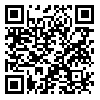BibTeX | RIS | EndNote | Medlars | ProCite | Reference Manager | RefWorks
Send citation to:
URL: http://hayat.tums.ac.ir/article-1-688-en.html
2- Ph.D Candidate, School of Nursing, Baqiyatallah University of Medical Sciences, Tehran, Iran
Nurses’ turnover phenomenon is a major concern in healthcare systems of many countries. In recent years, nursing shortages in Iran has become a major challenge for healthcare system managers. Based on the definition, “turnover” is a process in which employees leave an organization or transfer to other departments or units of the organization. However, in this definition it has not been specified whether members’ turnover is voluntarily or involuntarily (1). Also, nurses are vital components of healthcare systems, so that as the largest group, they constitute about 56% of the hospital staff (2). Lack of knowledge about nurses’ turnover makes it hard for managers of healthcare systems to recognize its effect and it complicates the efforts to fill nurses’ vacancies (3). This complex issue has been affected by several factors. Turnover and relocation of nursing employees have affected medical expenses through impact on patients’ resultants.
| Rights and permissions | |
 |
This work is licensed under a Creative Commons Attribution-NonCommercial 4.0 International License. |





